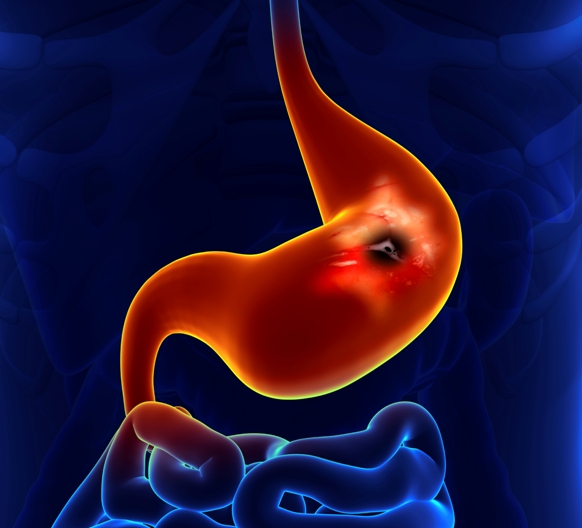Light-Sensitizing Synergy for Better Cancer Treatment?
Photodynamic therapy (PDT) is a clinically approved form of cancer treatment that entails the preferential accumulation of a photosensitizer, or light-sensitizng agent, in cancerous tissue. Upon illumination with visible light of the right wavelength, a series of photochemical reactions are triggered that ultimately cause the tumor’s destruction.
PDT has the ability to kill tumors not only direclty but also indirectly—by damaging the tumor’s blood vessel supply and bolstering the antitumor immune response. At this time, PDT has been approved in several countries for treating a variety of cancers, such as cancers of the lung, skin, bladder, esophagus, and cervix.
A fascinating research direction in recent years has been the use of PDT in combination with a variety of currently used cancer therapies, including chemotherapy, radiotherapy, surgery, gene therapy, and immunotherapy. In every case, PDT has been used without compromising the mainstream therapeutic modality.
Moreover, the adverse effects of chemotherapy or radiotherapy are reduced (due to the fact that PDT enables lower doses of these treatments), and PDT can be safely combined without the risk of increasing treatment cross-resistance (i.e., one treatment increasing the cancer’s resistance to another). Combinations of PDT with anti-angiogenic drugs, hyperthermia, and other forms of cancer treatment have also been successful.
PDT Combinations with Natural Products
Another intriguing angle is the combination of PDT with natural compounds, such as the plant substances curcumin (from the East Indian spice turmeric) and silybin (from the milk thistle plant). For example, when silybin was combined with ALA-PDT, the tumor-killing impact of photodynamic treatment was improved.
Researchers recently concluded that such combinations could lead to additive or synergistic effects as well as possibly blocking the development of metastases, as reported in the 5 April 2014 Journal of Photochemistry and Photobiology.
Another way to enhance PDT efficacy could entail the simultaneous administration of two different photosensitizers. Scientists at the Autonomous University of Madrid (Spain) recently tried combining two light-sensitizing agents: zinc(II)-phthalocyanine (ZnPc) and the cationic porphyrin meso-tetrakis(4-N-methylpyridyl)porphine (TMPyP).
The investigators then tested the ZnPc-TMPyP combination in different tumor cell lines as well as in tumor-bearing mice. They were able to demonstrate that the combination had synergistic effects in terms of killing breast cancer cells and other cancer cells in culture.
In their report, published in the March 2014 issue of Cell Death & Disease, the Madrid research team noted that the favorable results were accomplished with minimal PDT doses and achieved very efficient killing of cancer cells and malignant tumors. This improved anticancer effect, they theorized, could be the result of using combinations of effective photosentizierrs that are acting acting via different mechanisms in order to bolster the cancer cell’s vulnerrability to PDT—and improve the chances of therapeutic success.
Support us by buying our book, The Medicine of Light, and ebooks from our Photoimmune Discoveries eBook Series.
Sources
Gándara L, Sandes E, Di Venosa G, Prack Mc Cormick B, Rodriguez L, Mamone L, Batlle A, Eiján AM, Casas A. The natural flavonoid silybin improves the response to Photodynamic Therapy of bladder cancer cells. J Photochem Photobiol B. 2014 Apr 5;133:55-64.
© Copyright 2014, Photoimmune Discoveries, BV





 English
English Français
Français Deutsch
Deutsch Nederlands
Nederlands